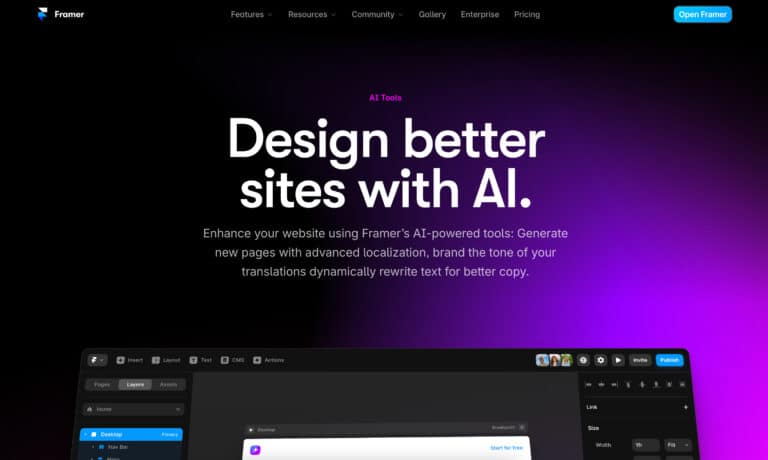AI voice assistants are transforming how you interact with technology, making everyday tasks easier, faster, and more efficient. With advancements in artificial intelligence, natural language processing, and speech recognition, these tools can now understand context, answer questions, and manage both personal and business tasks through simple voice commands. AI voice assistants allow you to control devices, search for information, and automate routine activities just by speaking.
Whether you’re managing your schedule, controlling smart home devices, or streamlining business communication, you have access to a growing range of options from companies like Amazon, Apple, Google, and several business-focused providers. New features and integrations continue to appear, offering you more ways to simplify your work and personal life with just your voice.
Key Takeaways
- AI voice assistants make daily tasks and device control hands-free.
- Leading platforms offer business, customer service, and personal applications.
- Advanced technology enables smarter, context-aware voice interactions.

What Are AI Voice Assistants?
AI voice assistants are sophisticated software agents that use artificial intelligence to process spoken commands, retrieve information, manage tasks, and help you interact with technology hands-free. These systems rely on a blend of advanced core technologies that enable accurate understanding and smooth conversation.
Core Technologies Behind AI Voice Assistants
AI voice assistants are powered by several key technologies:
- Artificial Intelligence (AI): Responsible for interpreting your intent and making decisions based on your inputs.
- Machine Learning: Allows the assistant to improve performance by learning from your interactions and refining its responses.
- Speech Recognition: Converts your spoken words into digital text the system can understand.
- Backend Integration: Lets voice assistants interact with calendars, smart devices, or databases, allowing task automation and information retrieval.
By combining these technologies, voice assistants such as Siri, Alexa, and Google Assistant provide you with dynamic, responsive experiences that can be tailored to your needs.
Natural Language Processing and Voice Recognition
Natural Language Processing (NLP) is a branch of AI focused on helping machines understand, interpret, and generate human language. In voice assistants, NLP analyzes your requests beyond literal words, grasping meaning, intent, and even tone.
Voice Recognition captures and translates your speech into machine-readable input. This is achieved through a mix of acoustic modeling, language modeling, and contextual cues, enabling high accuracy even in varied accents or noisy environments.
Through these components, AI voice assistants can understand your phrases much like another person would, resulting in relevant and seamless conversations.
How AI Voice Assistants Differ From Chatbots
While both AI voice assistants and chatbots process and respond to user input, significant differences set them apart.
Voice assistants rely on voice recognition for hands-free, spoken interaction. You can command devices, search online, or control smart home products by speaking naturally. Their deep integration with operating systems and other platforms also sets them apart.
Chatbots, on the other hand, usually interact via text and operate within limited domains, often requiring predefined commands. AI voice assistants go further, employing real-time NLP, speech synthesis, and context awareness to deliver more adaptive, conversational experiences across devices.


Leading AI Voice Assistants and Providers
AI voice assistants have become central for personal devices, smart homes, and productivity tools. Solutions from Apple, Amazon, Google, and others offer distinct strengths ranging from device integration to advanced conversational AI.
Siri and Apple Ecosystem
Siri is designed to be seamlessly integrated into the Apple ecosystem. You can use Siri hands-free across iPhone, iPad, Mac, Apple Watch, HomePod, and even CarPlay. Its privacy-first approach means most of your data stays on your device.
With Siri Shortcuts, you are able to create custom voice commands to automate complex sequences. Siri links deeply with Apple services like Messages, Reminders, and Apple Music. This makes hands-free control of messages, calls, and smart home devices effortless for you.
Siri continues to support multiple languages and regional dialects. You benefit from updates that improve contextual understanding and expand third-party app support. However, Siri’s functionality outside of the Apple ecosystem is limited compared to other voice assistants.

Amazon Alexa and Home Integration
Amazon Alexa is widely used in smart homes, especially with Echo devices. You can control a vast array of smart devices like lights, plugs, cameras, and thermostats using simple voice commands. The Alexa Skills library offers thousands of add-ons, allowing you to extend Alexa’s capabilities for news updates, games, productivity tools, and more.
Alexa routines let you automate actions based on schedules, locations, or device events. You also get strong compatibility with third-party products due to Amazon’s open ecosystem approach. Alexa supports multi-room audio, shopping lists, and integration with Amazon services for shopping and media.
Alexa Guard and voice calling features provide extra utility for security and communication. While Alexa’s voice recognition is highly accurate, you need to be aware that privacy is managed through cloud processing, with recordings sometimes stored online.

Google Assistant and Cross-Platform Usage
Google Assistant excels at cross-platform functionality. You can access it on Android phones, iOS devices, Google Nest products, smart displays, TVs, and more. Its tight integration with Google services like Calendar, Maps, Gmail, and Search makes it a powerful productivity tool.
You can issue complex queries and receive contextually relevant answers. Google Assistant supports multi-language use and is effective at understanding natural language. Features like Continued Conversation allow you to talk to Google Assistant more naturally, without repeating the wake word.
Google Assistant is central for controlling smart home devices that follow Google’s Home standard. The setup process for new devices is straightforward. With regular updates and machine learning improvements, you benefit from new features and enhanced accuracy throughout your Google-connected devices.
Notable Alternatives: Hound, Youper, and Microsoft Copilot
Several alternatives to the major providers exist, each focusing on unique strengths. Hound is known for its rapid, context-rich voice searches and ability to handle complex natural language queries. You can use Hound for fast information retrieval across different topics, catering to users who need detailed and specific results.
Youper stands out in the wellness space, providing AI-powered mental health support using natural voice conversation. Through Youper, you get guidance for emotional tracking and personalized mental health interventions, making it unique among general-purpose assistants.
Microsoft Copilot, integrated within the Microsoft 365 suite, brings AI voice assistance to professional and enterprise users. You can use Copilot to create documents, summarize emails, generate code, and streamline workplace tasks through conversational input. It emphasizes productivity and leverages Microsoft’s data privacy and security standards.
| Assistant | Best For | Device Integration | Notable Features |
|---|---|---|---|
| Siri | Apple users, privacy | iOS, macOS, watchOS | Shortcuts, in-device processing |
| Alexa | Smart home, voice shopping | Echo, 3rd-party smart | Skills, routines, multi-room audio |
| Google Asst. | Cross-platform search, productivity | Android, iOS, Nest | Continued Conversation, Google services |
| Hound | Fast, detailed queries | Mobile, web | Complex, context-aware responses |
| Youper | Mental health, wellness | Mobile, web | Emotional tracking, mental health support |
| Copilot | Professional tasks, productivity | PC, web, Microsoft 365 | Document automation, code generation |

Key Features and Applications
AI voice assistants offer practical tools for daily convenience and efficiency. You can interact using natural language, automate routines, and stay organized—all without manual effort.
Voice Commands and Hands-Free Communication
With AI voice assistants, you control devices and access information using your voice. You can ask for the weather, search the web, make phone calls, or send messages—all without touching a screen. This hands-free approach makes tasks safer, especially when your hands are occupied, such as while driving or cooking.
Voice commands support a wide range of requests, including launching apps, adjusting device settings, or playing music. Most assistants use advanced natural language processing (NLP) to interpret your intent, allowing for conversational interactions rather than strict command phrasing.
Many systems support multi-language recognition and can distinguish between multiple users within the same household. This helps tailor responses to your preferences and gives a personalized experience even on shared devices.
Smart Home Control and Home Automation
AI voice assistants integrate with smart home devices, making it easy to control lighting, thermostats, locks, and security systems. With a simple voice command, you can dim the lights, adjust the temperature, or check if doors are locked. This level of automation contributes to comfort, safety, and energy efficiency at home.
Voice assistants also support creating routines. For example, saying “good night” might automatically lock doors, turn off lights, and lower the thermostat. Compatibility with a growing list of smart devices through platforms like Alexa, Google Assistant, or Apple HomeKit allows you to customize your setup to fit your lifestyle.
You can monitor household devices remotely, receive notifications of activity, or automate tasks based on time, location, or sensor data. This enhances your control over home environments even when you’re away.
To-Do Lists, Reminders, and Task Management
AI voice assistants help you manage daily tasks by creating to-do lists, setting reminders, and scheduling calendar events with voice commands. You can quickly add groceries to your shopping list, set a reminder for appointments, or dictate tasks directly into your digital assistant.
Reminders can be time-based, such as “Remind me to call John at 3 PM,” or location-based, such as “Remind me to buy milk when I arrive at the store.” Task lists sync across devices, so you can access your agenda from your smartphone, tablet, or smart speaker.
Many systems allow sharing lists with other users or assigning tasks within a household or team. This collaborative capability supports coordination and helps ensure nothing important is overlooked.

Technology Behind AI Voice Assistants
Modern AI voice assistants use advanced algorithms for converting text and speech, enabling you to interact naturally and efficiently with devices. Their capabilities span high-quality voice synthesis, real-time transcription, and seamless communication across applications.
Text-to-Speech and Voice-Over Capabilities
Text-to-speech (TTS) technology forms the foundation of a voice assistant’s ability to talk back to you. The latest TTS engines use neural networks to generate speech that closely mimics human tone, pitch, and inflection, making responses sound more natural.
With voice-over features, you can have apps and content read aloud, supporting both accessibility and convenience. Many assistants let you choose different voices, languages, and accents to match your preferences or regional needs.
Key areas where voice assistants’ TTS is used include:
- Navigation guidance in cars
- Reading out notifications or reminders
- Content playback for e-books and news
- Voice notifications for smart home devices
Developers can integrate these capabilities using tools like Google Text-to-Speech, Amazon Polly, or Apple’s Siri voices for customized user experiences.
Dictation, Transcription, and Messaging Functions
Dictation technology allows you to speak instead of type, which boosts productivity and accessibility. You can compose emails or messages hands-free by simply dictating your words, with the AI accurately recognizing and converting your speech into written text.
Transcription features go further, transforming recorded conversations or meetings into searchable, editable text. This benefits industries like healthcare, legal, and customer support, where accurate records are essential.
Messaging functions in voice assistants connect with apps and devices so you can:
- Send and read texts
- Reply to messages
- Manage emails by voice
Popular assistants refine these functions using machine learning, context recognition, and ongoing user feedback, ensuring higher accuracy and convenience over time.

Business and Customer Service Use Cases
AI voice assistants are changing the way you interact with customers and handle everyday business processes. These systems are most effective when used to automate repetitive tasks and integrate seamlessly with your existing technology stack.
Self-Service and Automated Support
AI voice assistants allow your organization to handle common customer requests without needing human intervention. You can automate straightforward tasks, such as password resets, order tracking, and frequently asked questions. This improves efficiency and shortens response times.
Most voice AI platforms use natural language processing to understand user intent and provide relevant information. Customers can manage orders, check product details, or inquire about support policies at any hour. As a result, your staff can focus on more complex issues.
Some companies deploy AI voice assistants across websites and phone lines, supporting self-service for both digital and voice channels. A table below highlights popular self-service functionalities:
| Functionality | Example Use Case |
|---|---|
| Account management | Reset passwords, update contact info |
| Order handling | Track shipments, modify orders |
| Information lookup | Product details, service hours |
CRM Integration and Productivity Tools
Integrating AI voice assistants with your CRM systems can improve data accuracy and streamline customer interactions. The assistant can log conversations, update records, and trigger follow-up reminders without manual input.
AI assistants can pull up customer profiles, recent purchases, or previous support tickets during a call. This provides your representatives with instant, actionable information. You can also use voice commands to schedule appointments, send emails, or retrieve analytics.
Tools for productivity include dictation features, calendar management, and note-taking, all accessible by voice. Combined with CRM integration, these features reduce time spent on administrative tasks and allow you to maintain up-to-date records easily. This, in turn, supports more personalized and efficient service for your customers.
- 22shares
- Facebook0
- Pinterest19
- Twitter3
- Reddit0













